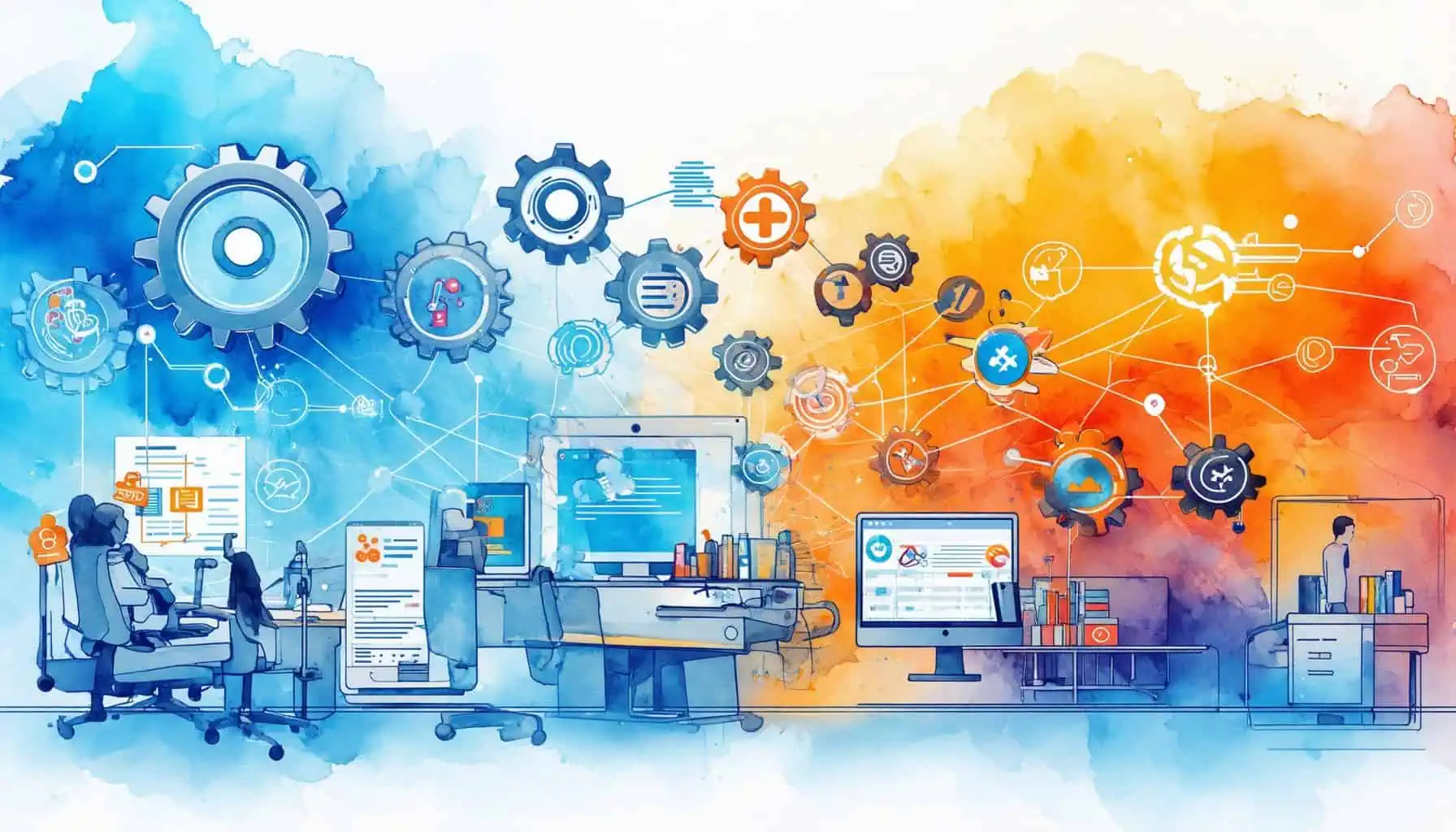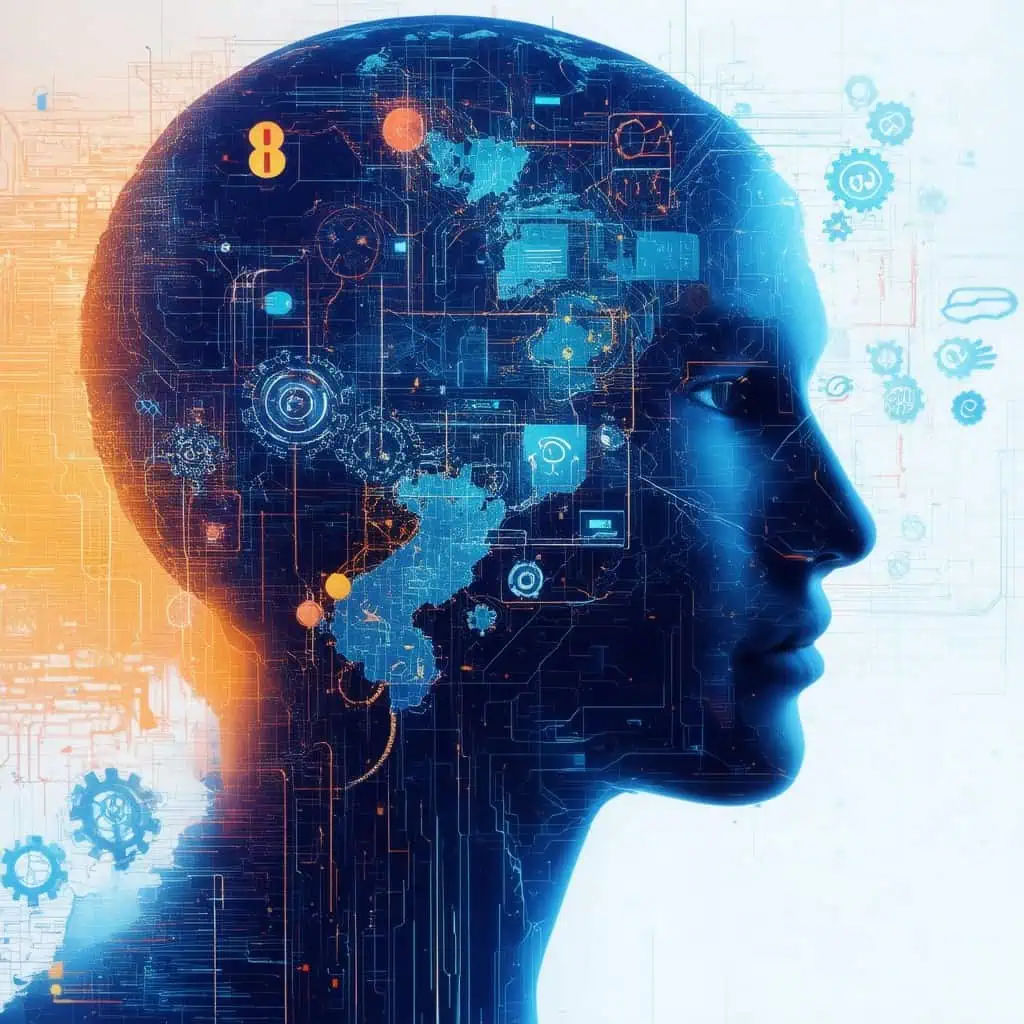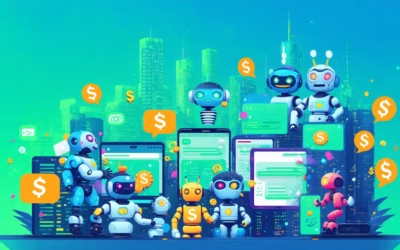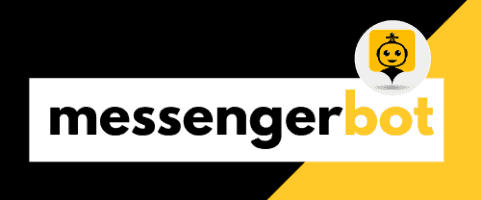Key Takeaways
- Diverse Chatbot Use Cases: Chatbots enhance efficiency across various sectors, including human resources, healthcare, and e-commerce, by automating routine tasks and improving user engagement.
- 24/7 Customer Support: Implementing chatbots allows businesses to provide round-the-clock assistance, improving customer satisfaction and reducing wait times.
- Lead Generation: Chatbots can significantly boost conversion rates by engaging potential customers and qualifying leads, leading to a 30% increase in sales opportunities.
- Personalized User Experience: AI-driven chatbots analyze user preferences to deliver tailored recommendations, enhancing shopping experiences and fostering customer loyalty.
- Healthcare Revolution: In healthcare, chatbots streamline appointment scheduling, provide medication reminders, and facilitate patient engagement, improving service delivery.
- Data-Driven Insights: Chatbots collect valuable customer feedback and interaction data, enabling businesses to make informed decisions and enhance products and services.
In today’s rapidly evolving digital landscape, chatbot use cases have emerged as a transformative force across various industries, enhancing efficiency and user engagement. From streamlining processes in human resources to revolutionizing patient interactions in healthcare, the applications of chatbots are both diverse and impactful. This article delves into the multifaceted world of chatbots, exploring their numerous uses and real-life applications. We will examine key areas such as the role of chatbots in HR, everyday examples of chatbot interactions, and the different types of chatbots tailored for specific needs. Additionally, we will discuss when to consider implementing a chatbot for your business and provide insights into the evolving technology behind these digital assistants. Join us as we uncover the potential of chatbots and how they can be leveraged to meet various business challenges and enhance customer experiences.
What are the uses of chatbots?
Chatbots are advanced software applications designed to simulate human conversation through artificial intelligence (AI) and natural language processing (NLP). They serve various purposes across multiple industries, enhancing customer interaction and operational efficiency. Here are some key uses of chatbots:
Chatbot use case diagram
- Customer Support: Chatbots provide instant responses to customer inquiries, addressing concerns and resolving issues 24/7. This availability improves customer satisfaction and reduces wait times, as highlighted by a study from Gartner, which found that by 2022, 70% of customer interactions will involve emerging technologies like chatbots.
- Lead Generation and Qualification: Chatbots can engage potential customers by asking qualifying questions and gathering information, which helps businesses identify high-quality leads. According to a report by HubSpot, companies using chatbots for lead generation see a 30% increase in conversion rates.
- Personalized Recommendations: Utilizing AI, chatbots analyze user behavior and preferences to provide tailored product recommendations, enhancing the shopping experience. A study by Accenture revealed that 91% of consumers are more likely to shop with brands that provide relevant offers and recommendations.
- Appointment Scheduling: Many businesses use chatbots to streamline appointment booking processes. By integrating with calendars, chatbots can manage schedules and send reminders, reducing no-show rates.
- Multilingual Support: Chatbots can communicate in multiple languages, making them invaluable for global businesses. This capability allows companies to expand their customer base and cater to diverse markets.
- Data Collection and Feedback: Chatbots can efficiently gather customer feedback and data, providing businesses with insights into customer preferences and satisfaction levels. This information is crucial for improving products and services.
- Integration with Messaging Platforms: Chatbots can be integrated into popular messaging platforms like Facebook Messenger, allowing businesses to reach customers where they are most active. This integration enhances user engagement and accessibility.
Best chatbot use cases
In addition to the general uses outlined above, specific industries have adopted chatbots for tailored applications:
- Human Resources: Chatbots in HR streamline recruitment processes by answering candidate queries, scheduling interviews, and providing onboarding information. The Messenger Bot can automate these tasks, enhancing efficiency.
- Insurance: Chatbots for insurance can assist customers with policy inquiries, claims processing, and providing quotes. This reduces the workload on human agents and improves customer satisfaction.
- E-commerce: Chatbots in e-commerce enhance the shopping experience by guiding customers through product selections and facilitating transactions. They can also recover abandoned carts, significantly boosting sales.
- Healthcare: In the healthcare sector, chatbots can provide patients with appointment reminders, medication information, and general health advice, improving patient engagement and care.
In conclusion, chatbots are versatile tools that not only improve customer service but also drive sales and operational efficiency. As technology evolves, their capabilities continue to expand, making them an essential component of modern business strategies. For further reading, refer to sources like IBM AI Chatbots and Salesforce AI Chatbots for insights on chatbot applications and effectiveness.
How are chatbots used in real life?
Chatbots are increasingly integrated into various aspects of daily life, demonstrating their versatility beyond mere entertainment. Here are some key applications of chatbot technology:
Chatbots in human resources
In the realm of human resources, chatbots are revolutionizing the way organizations manage their workforce. The human resources chatbot can automate various HR tasks, such as answering employee queries, scheduling interviews, and onboarding new hires. This not only saves time but also enhances the overall employee experience. By utilizing chatbots in HR, companies can ensure that their staff receives immediate assistance, leading to increased productivity and satisfaction.
Moreover, the chatbot for HR can analyze employee feedback and engagement levels, providing valuable insights that help HR teams make informed decisions. With the ability to handle multiple inquiries simultaneously, these chatbots significantly reduce the workload on HR professionals, allowing them to focus on strategic initiatives. For more information on implementing chatbots in HR, check out our chatbot tutorials for implementation.
Chatbot for human resources
The chatbot for human resources serves as a virtual assistant, streamlining communication between employees and HR departments. By providing instant responses to common questions regarding policies, benefits, and procedures, the chatbot in HR enhances the efficiency of HR operations. This technology is particularly beneficial for large organizations where managing employee inquiries can be overwhelming.
Additionally, the chatbots usage in HR extends to performance management, where they can facilitate feedback collection and performance reviews. This not only simplifies the process but also encourages a culture of continuous improvement. As organizations continue to embrace digital transformation, the integration of chatbots in human resources will play a crucial role in shaping the future of work.
What are some common examples of chatbots used in everyday life?
Chatbots have become integral to our daily interactions, enhancing user experiences across various platforms. Here are some notable examples of chatbots that illustrate their diverse applications:
- Landbot: An AI-driven platform that enables businesses to create conversational experiences without coding. It serves as an interactive gift idea wizard, guiding users through personalized suggestions based on their preferences.
- Intercom: A widely used customer messaging platform that incorporates chatbots to enhance customer support. It automates responses to frequently asked questions and helps in lead generation by engaging visitors in real-time.
- Accedo: This chatbot provides a unique conversational experience in 3D environments, allowing users to interact with content in a more immersive way, particularly in entertainment and media sectors.
- Radio Canada: Utilizes chatbots for its disinformation campaign, helping users identify and combat false information by providing accurate news updates and resources.
- Liverpool City Council: Implements a virtual assistant to streamline citizen inquiries, offering information on local services, events, and council activities, thereby improving community engagement.
- IVA Advisory Center: A chatbot designed to assist users with debt management, providing personalized advice and resources to help individuals navigate their financial challenges.
- Facebook Messenger Bots: These bots facilitate communication between businesses and customers on the Messenger platform, allowing for automated responses, appointment scheduling, and customer service inquiries, enhancing user engagement and satisfaction.
These chatbots exemplify the diverse applications of AI in everyday life, enhancing user experiences across various sectors, from customer service to personal assistance. For further insights into chatbot technology and its impact, refer to sources like the Journal of Artificial Intelligence Research and industry reports from Gartner.
Uses of chatbot in daily life
Chatbots are not only transforming business interactions but also enriching personal experiences. Here are some common uses of chatbots in daily life:
- Customer Support: Many businesses deploy chatbots to handle customer inquiries, providing instant responses and reducing wait times. This enhances customer satisfaction and streamlines service processes.
- Personal Assistants: Chatbots like Google Assistant and Siri help users manage their daily tasks, from setting reminders to providing weather updates, making life more organized.
- Shopping Assistance: E-commerce platforms utilize chatbots to guide users through product selections, answer questions about orders, and facilitate seamless transactions, improving the overall shopping experience.
- Health and Wellness: Chatbots in healthcare offer users personalized health advice, appointment scheduling, and medication reminders, contributing to better health management.
- Entertainment: Chatbots can recommend movies, music, or books based on user preferences, enhancing leisure time with tailored suggestions.
These uses of chatbots illustrate their versatility and effectiveness in enhancing everyday life, making them an invaluable tool for both businesses and consumers alike.
What are the four types of chatbots?
Understanding the different types of chatbots is essential for businesses looking to implement effective chatbot solutions. Each type serves unique purposes and can be tailored to specific use cases. Here are the four primary types of chatbots:
- Menu-based chatbots: These are the simplest form of chatbots, providing users with a predefined set of options to choose from. Users navigate through a menu to find answers or services, making them easy to use but limited in flexibility. They are often employed in customer service scenarios where straightforward queries are common.
- Rule-based chatbots: Building on the menu-based model, rule-based chatbots utilize a decision tree framework. They respond to user inputs based on specific rules, employing an if/then logic to guide conversations. While they can handle more complex interactions than menu-based bots, their effectiveness is still limited to the scenarios for which they are programmed.
- AI-powered chatbots: These chatbots leverage artificial intelligence and natural language processing (NLP) to understand and respond to user queries more dynamically. They learn from interactions, improving their responses over time. AI-powered chatbots can handle a wide range of topics and provide personalized experiences, making them suitable for more complex customer service and engagement tasks.
- Hybrid chatbots: Combining the strengths of rule-based and AI-powered chatbots, hybrid chatbots can switch between scripted responses and AI-driven interactions. This versatility allows them to manage straightforward inquiries efficiently while also addressing more complex questions through AI capabilities. They are increasingly popular in applications requiring both structured and flexible communication.
Chatbots usage in different industries
Chatbots have found applications across various industries, enhancing efficiency and customer engagement. Here are some notable sectors utilizing chatbots:
- Healthcare: In the healthcare industry, chatbots are used for appointment scheduling, patient inquiries, and providing health information. The AI healthcare chatbot can assist patients with their queries, improving access to information and reducing the workload on healthcare professionals.
- Human Resources: Chatbots for HR streamline recruitment processes, answer employee questions, and assist with onboarding. A human resources chatbot can automate repetitive tasks, allowing HR teams to focus on strategic initiatives.
- Insurance: Insurance bots help customers file claims, provide policy information, and answer questions about coverage. The chatbot for insurance can enhance customer service by providing instant responses to inquiries.
- E-commerce: In e-commerce, chatbots assist with product recommendations, order tracking, and customer support. They enhance the shopping experience by providing real-time assistance, which can lead to increased sales and customer satisfaction.
When Should You Consider Using a Chatbot?
Chatbots have become increasingly important in various sectors due to their ability to enhance customer interaction and streamline operations. Here are key scenarios where implementing a chatbot can be beneficial:
1. **Customer Support**: If your business receives a high volume of inquiries, chatbots can provide immediate responses to frequently asked questions, ensuring customers receive timely assistance. According to a study by Gartner, by 2022, 70% of customer interactions will involve emerging technologies such as chatbots.
2. **24/7 Availability**: Chatbots can operate around the clock, allowing customers to receive support outside of regular business hours. This is particularly useful for businesses with a global customer base, as it caters to different time zones.
3. **Lead Generation**: Chatbots can engage website visitors, qualify leads, and gather contact information through interactive conversations. A report from HubSpot indicates that businesses using chatbots for lead generation see a 30% increase in conversion rates.
4. **Personalized Recommendations**: By utilizing AI and machine learning, chatbots can analyze user behavior and preferences to provide tailored product recommendations, enhancing the shopping experience. This personalization can lead to higher customer satisfaction and loyalty.
5. **Handling Complaints**: Chatbots can efficiently manage complaints by providing immediate responses and solutions, which can help de-escalate potential issues. A survey by Zendesk found that 67% of consumers have used a chatbot for customer service, highlighting their effectiveness in resolving problems.
6. **Data Collection and Analysis**: Chatbots can gather valuable data on customer interactions, preferences, and feedback, which can be analyzed to improve products and services. This data-driven approach can lead to more informed business decisions.
In conclusion, businesses should consider using chatbots when they aim to enhance customer service, improve operational efficiency, and leverage data for better decision-making. By integrating chatbots, companies can not only meet customer expectations but also stay competitive in an increasingly digital marketplace.
Use Cases for Chatbot Implementation
When exploring chatbot use cases, it’s essential to identify specific business needs that can be addressed through automation. Here are some effective use cases for chatbot implementation:
– **Human Resources Chatbot**: Chatbots in HR can streamline recruitment processes by answering candidate queries, scheduling interviews, and providing information about company policies. This reduces the workload on HR teams and enhances the candidate experience.
– **E-commerce Chatbot**: In the e-commerce sector, chatbots can assist customers in finding products, processing orders, and handling returns. This not only improves customer satisfaction but also boosts sales through personalized shopping experiences.
– **Insurance Chatbot**: For the insurance industry, chatbots can facilitate claims processing, provide policy information, and assist customers in understanding their coverage options. This can lead to quicker resolutions and improved customer trust.
– **Healthcare Chatbot**: In healthcare, chatbots can help patients schedule appointments, provide medication reminders, and answer common health-related questions. This enhances patient engagement and streamlines administrative tasks.
By identifying these specific use cases, businesses can effectively implement chatbots to meet their unique operational needs and improve overall efficiency.
Chatbot Use Case for Specific Business Needs
To maximize the benefits of chatbot technology, businesses should tailor their chatbot solutions to address specific needs. Here are some examples of how chatbots can be customized for various sectors:
– **Customer Service Automation**: Companies can deploy chatbots to handle routine inquiries, allowing human agents to focus on more complex issues. This not only improves response times but also enhances customer satisfaction.
– **Lead Qualification**: Businesses can use chatbots to engage potential customers on their websites, asking qualifying questions to determine their needs and directing them to the appropriate sales representatives.
– **Feedback Collection**: Chatbots can be programmed to solicit feedback from customers after interactions, providing valuable insights that can be used to improve products and services.
– **Multilingual Support**: For businesses operating in diverse markets, chatbots can be equipped with multilingual capabilities to cater to a broader audience, ensuring effective communication across different languages.
By focusing on these specific business needs, companies can leverage chatbot technology to drive efficiency, enhance customer experiences, and ultimately achieve their operational goals.
Is Siri a Chatbot?
Siri is not just a chatbot; it is a sophisticated virtual assistant developed by Apple that utilizes advanced artificial intelligence (AI) and machine learning technologies. Unlike traditional chatbots that primarily respond to text-based queries, Siri can understand and process natural language, allowing users to interact with it through voice commands.
Chatbot Technology and Its Evolution
The evolution of chatbot technology has been remarkable, transitioning from simple scripted responses to complex AI-driven systems capable of understanding context and intent. Early chatbots were limited in functionality, often relying on predefined scripts that restricted user interactions. However, advancements in natural language processing (NLP) and machine learning have enabled modern chatbots to engage in more meaningful conversations.
Today, chatbots are integrated into various sectors, including customer service, healthcare, and human resources. For instance, Messenger Bot exemplifies how chatbot technology can enhance user engagement through automated responses and workflow automation. This evolution has led to the development of specialized chatbots, such as AI chat assistants that cater to specific business needs, including multilingual support and integration with existing systems.
Comparison of Siri and Traditional Chatbots
While both Siri and traditional chatbots aim to assist users, their functionalities differ significantly:
- Voice Recognition: Siri employs state-of-the-art voice recognition technology, enabling it to accurately interpret user commands and questions. Traditional chatbots typically rely on text input.
- Contextual Understanding: Siri can maintain context in conversations, allowing for follow-up questions and more natural interactions. In contrast, many chatbots struggle with context retention.
- Integration with Ecosystems: Siri seamlessly integrates with various Apple services and devices, enhancing its utility. Traditional chatbots may not offer such extensive integration.
- Personalization: Siri learns from user preferences, providing personalized responses. Traditional chatbots often lack this level of personalization.
In summary, while Siri shares some characteristics with chatbots, such as responding to user inquiries, it is a more advanced virtual assistant that leverages AI to provide a richer, more interactive experience. For further reading on the evolution of virtual assistants and their capabilities, refer to sources like the Journal of Artificial Intelligence Research and industry analyses from Gartner.
Chatbot Use Cases in Healthcare
Chatbots are revolutionizing the healthcare industry by enhancing patient engagement, streamlining administrative tasks, and improving overall service delivery. The integration of chatbot technology in healthcare settings is proving to be a game-changer, offering numerous use cases that cater to both patients and healthcare providers.
Use of Chatbots in Healthcare
Chatbots in healthcare are primarily utilized for a variety of functions, including:
- Patient Support: Chatbots provide 24/7 assistance to patients, answering common queries about symptoms, medications, and appointment scheduling. This reduces the burden on healthcare staff and ensures patients receive timely information.
- Appointment Scheduling: Many healthcare facilities use chatbots to automate the appointment booking process. Patients can easily schedule, reschedule, or cancel appointments through conversational interfaces, enhancing user experience.
- Medication Reminders: Chatbots can send reminders to patients about medication schedules, helping to improve adherence to prescribed treatments and reducing the risk of complications.
- Telehealth Services: With the rise of telemedicine, chatbots facilitate virtual consultations by guiding patients through the process and providing necessary information before their appointments.
- Insurance Queries: Chatbots assist patients in navigating their health insurance options, answering questions about coverage, and even helping with claims processing.
Healthcare Chatbot Use Case Diagram
A chatbot use case diagram for healthcare typically illustrates the various interactions between patients and the chatbot system. Key components include:
- Patient Interaction: Patients initiate conversations for support, appointment scheduling, or inquiries.
- Data Processing: The chatbot processes input data and retrieves relevant information from databases or APIs.
- Response Generation: Based on the input, the chatbot generates appropriate responses, which can include text, links to resources, or prompts for further action.
- Feedback Loop: Patients can provide feedback on their experience, allowing for continuous improvement of the chatbot’s functionalities.
By leveraging chatbot technology, healthcare providers can enhance operational efficiency and patient satisfaction. For more insights on implementing chatbots in healthcare, explore our chatbot features and tutorials for implementation.







